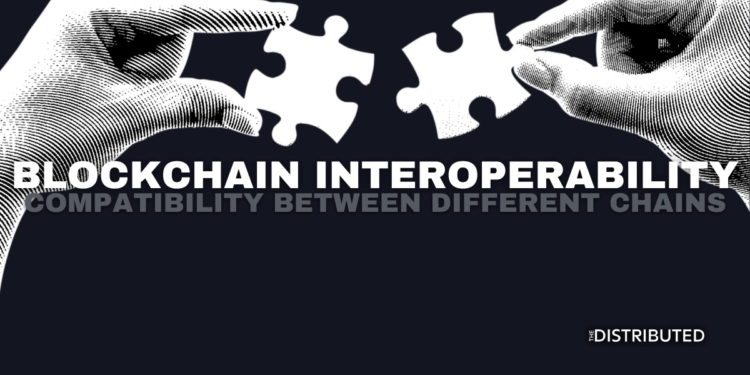What Is Blockchain Interoperability?
Blockchain interoperability is the compatibility between blockchains, allowing for features and information to be shared between chains.
Interoperability is achieved through sidechains, oracles, bridges,[1]Gemini – Cross-Chain Interoperability: What it Means for Blockchain and interoperability protocols. There are various other methods all with the goal of allowing communication between chains.
Interoperability allows for tokens to be traded across various chains through decentralized exchanges (DEXs), reducing the need for centralized exchanges. This means in certain cases, the ledgers behind the chains must be connected too, although the extent to what is observed by nodes may be limited.[2]Daml Docs – Ledger Interoperability
Interoperability can also be used to connect central bank digital currencies into decentralized applications (dApps) and blockchains,[3]World Economic Forum – Defining Interoperability, Page 3 bringing the banking world to the decentralized world.
Making Blockchains Interoperable
Cosmos implements the inter-blockchain communication (IBC) protocol, essentially a bunch of cross-chain bridges connected centrally to the Cosmos Hub. This hub allows different blockchains to communicate with each other, through a peg-zone (two-way bridge). Polkadot is similar to Cosmos, it’s a multichain that connects blockchains and parachains into a larger ecosystem through bridges.
Quant doesn’t have its own blockchain, rather it uses the “Overledger Protocol” running on top of blockchains allowing them to create mApps (similar to dApps). These applications use various blockchains for different parts of it,[4]Quant Network Review: MApps as the Bridge to Real Adoption such as one for payments and one for smart contracts.
Oracles such as Chainlink bridge the on-chain and the off-chain world by providing blockchains and smart contracts with real-world data.
Protocols such as Wanchain wrap tokens, this allows non-native tokens to be coded in a way that allows for them to be traded on other blockchains.
References



